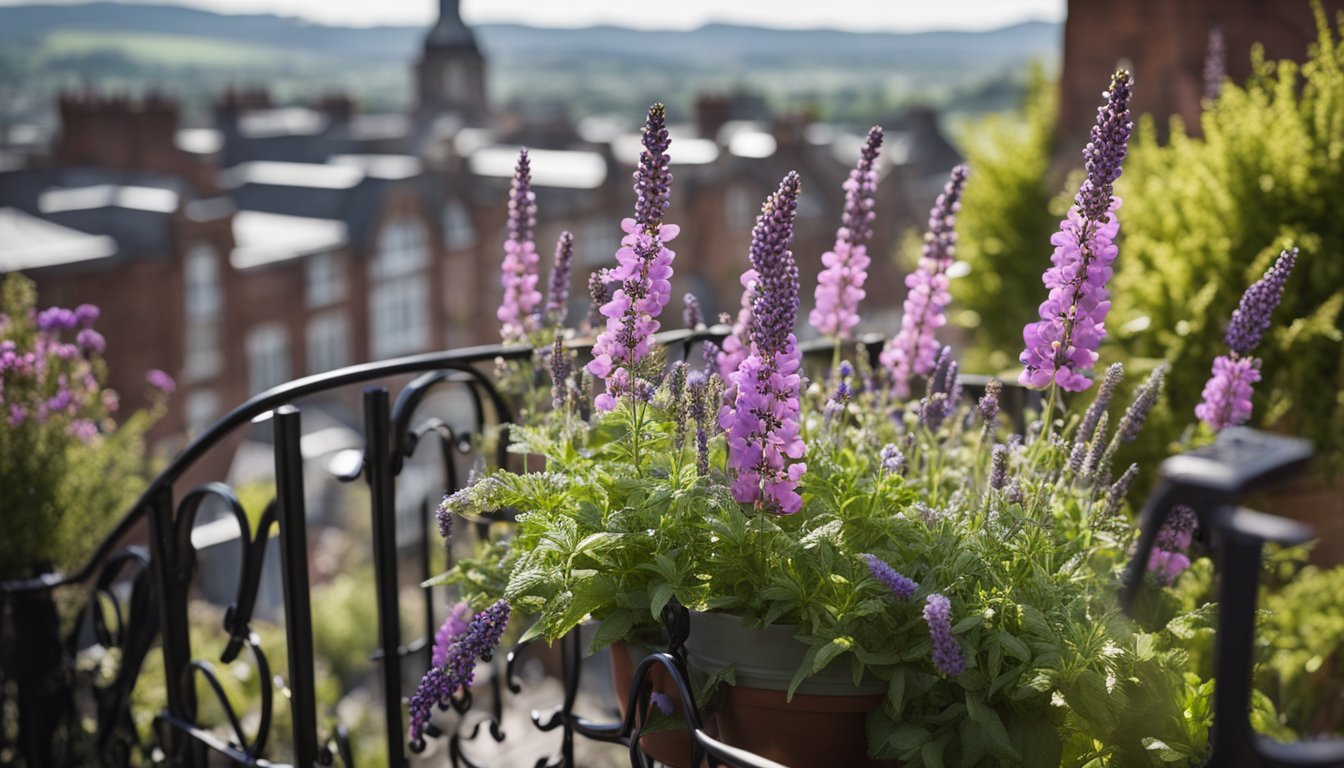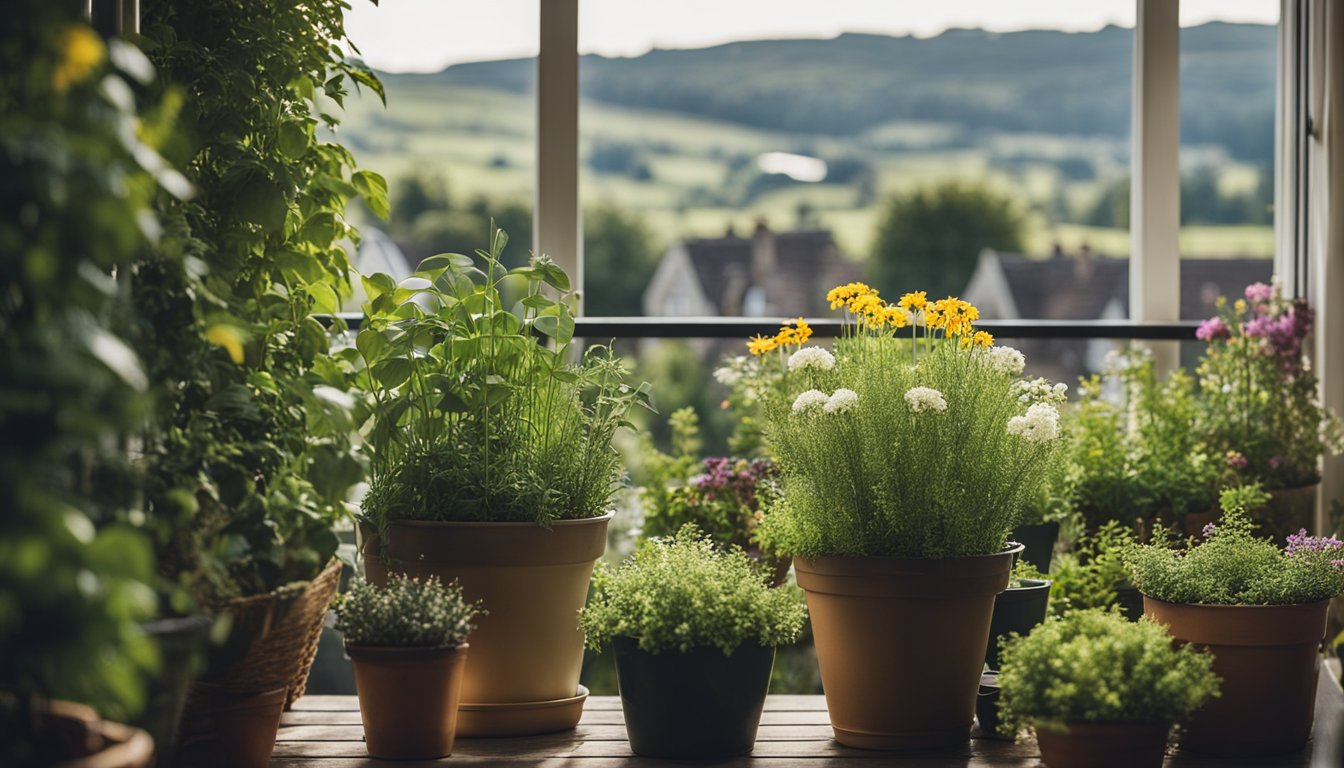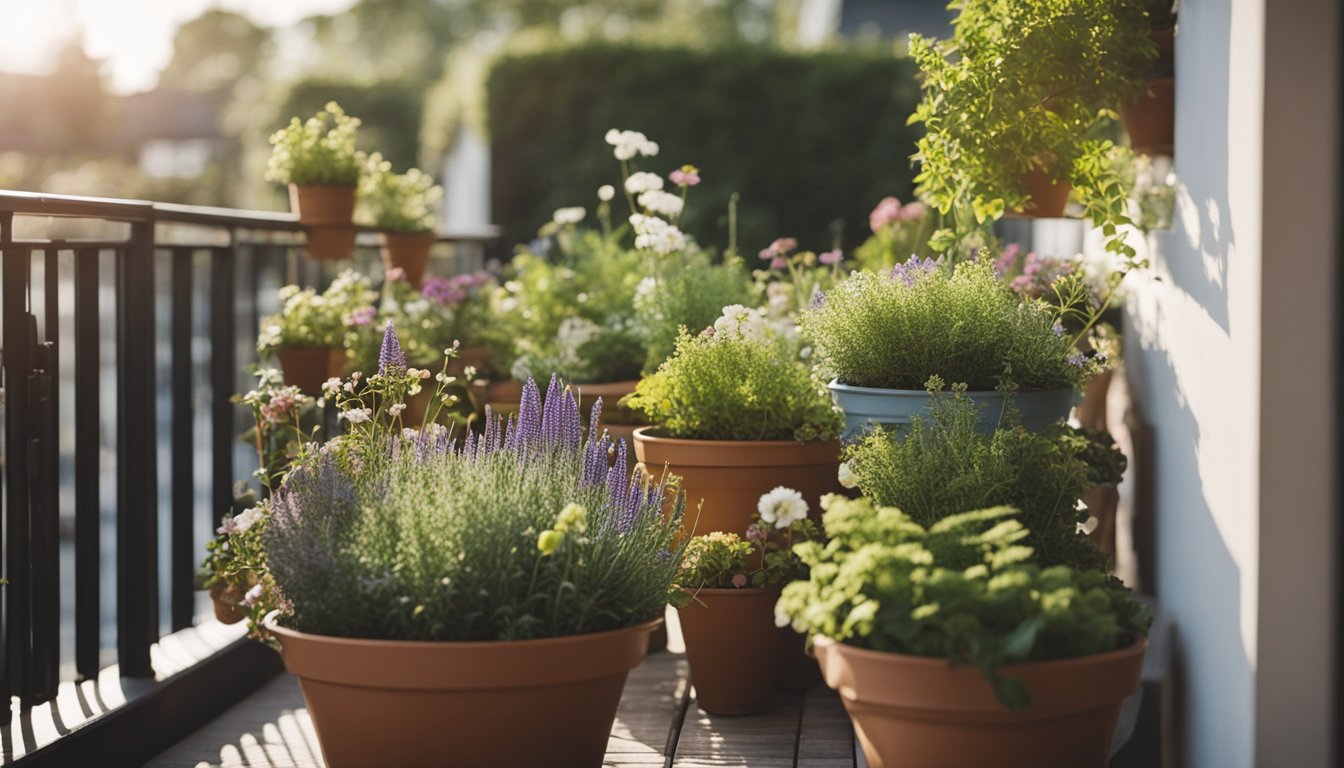Late updated: 28 Oct 2024 11:10
Written by: Emily Thornton
Choosing Native UK Plants for Balcony Gardens: A Practical Guide
Transform your balcony into a thriving wildlife haven by choosing native UK plants. Opting for native species not only enhances biodiversity but also provides essential resources for local wildlife. Native plants are naturally adapted to our climate, making them ideal for balcony gardening and requiring less maintenance compared to non-native counterparts.

Our native flora offers a unique opportunity to create a natural paradise, even in urban settings. With a well-chosen selection of plants, your balcony can become a vibrant source of pollen and nectar, attracting bees, butterflies, and birds. These small green pockets contribute significantly to urban biodiversity, allowing us to reconnect with nature away from sprawling gardens.
By embracing our local plant heritage on our balconies, we can support wildlife and enjoy a more sustainable gardening experience. The beauty of this approach lies in its simplicity and resilience. Let's explore practical tips and elegant solutions that make starting a balcony garden with native UK plants an enriching experience for us all.
Key Takeaways
- Choose native plants to create a low-maintenance balcony wildlife garden.
- Native species support local biodiversity with pollen and nectar sources.
- Balcony gardens enhance urban nature, benefiting local wildlife.
Understanding the UK's Native Flora

Our nation's diverse range of native flora offers significant benefits to local ecosystems. Emphasising native trees and wildflowers in garden planning supports biodiversity, creates habitats, and enriches our surroundings. These plants are well-adapted to local soil conditions and climates, making them an excellent choice for any garden, including balcony gardens.
Significance of Native Trees and Shrubs
Native trees and shrubs provide vital support for biodiversity. Species such as English oak (Quercus robur) and silver birch (Betula pendula) offer habitats and food for numerous insect species and birds. They are particularly effective in attracting pollinators like bees and butterflies, enhancing the natural beauty of our surroundings.
These trees thrive in various soil types, including chalky, loamy, and sandy soils. This adaptability makes them suitable for different parts of the UK. For example, the rowan (Sorbus aucuparia) and elder (Sambucus nigra) are excellent for wildlife gardens, supporting both the ecosystem and contributing to soil health. Choosing the right native tree or shrub for your balcony garden can significantly impact local biodiversity.
Role of Wildflowers in Ecosystem Health
Native wildflowers play a crucial role in maintaining ecosystem health by supporting pollinators and other wildlife. Species like foxglove (Digitalis purpurea) and ox-eye daisy (Leucanthemum vulgare) attract bees and butterflies. These flowers are not only beautiful but contribute to the ecological balance by providing nectar and habitats for insects.
Different wildflowers flourish in specific soil conditions, with sea thrift (Armeria maritima) thriving in sandy soils while wood anemone (Anemone nemorosa) prefers shaded, wooded areas. By integrating a variety of these plants into our balcony gardens, we help nurture a thriving environment that benefits both wildlife and our living spaces.
Practical Tips for Balcony Gardening with Native Species

Cultivating native UK plants on our balconies enriches biodiversity and supports local wildlife. Let's explore how to select the best plants for our balcony conditions and how to make our gardens a haven for wildlife.
Selecting Plants for Your Balcony Conditions
When choosing plants for our balcony garden, it's essential to consider factors like sunlight, wind exposure, and available space. Native species such as dog rose, rowan tree, and elderberry are hardy and can thrive in various conditions. If our balcony receives ample sunlight, we might opt for crab apples and field roses, both ideal for sunny spots.
In shaded areas, plants like the red campion can be a perfect fit. Understanding the soil type we have, whether sandy, loamy, or chalky, will guide us to pick species that will flourish. Use lightweight containers with good drainage to maintain healthy soil. Regular watering, especially in the warmer months, ensures optimal growth and health.
Providing for Wildlife
Our choice of native species can transform a simple balcony into a vibrant wildlife garden. By opting for plants that offer nectar and pollen, we can attract bees, butterflies, and other pollinators. For instance, flowers like the dog rose and field rose are excellent nectar sources.
Additionally, including a native hedge or dwarf variety can provide shelter and food for birds. Evergreen species are valuable for year-round coverage, offering a haven for local fauna even in winter. By integrating plants such as rowan trees, which produce berries, we can feed birds like thrushes and provide a touch of colour with their autumn leaves.
Frequently Asked Questions
In addressing balcony gardening with native UK plants, we explore options for both sunny and shaded areas, choices for privacy, and plants suited for limited spaces. We also highlight plants to enhance balcony railings visually.
What are the best low-maintenance plants for a sunny balcony?
For sunny balconies, hardy options like lavender and thyme thrive with minimal care. These plants require well-draining soil and enjoy basking in sunlight, making them perfect for low-maintenance greenery.
Which tall plants would be suitable for balcony privacy?
To ensure privacy, consider planting native species like the evergreen holly or the upright common juniper. These provide natural screens and add a touch of green throughout the year, ideal for creating a secluded space.
How can one establish a balcony garden that remains vibrant throughout the year?
Using a mix of evergreens and perennials ensures year-round vibrancy. Incorporate species like ivy and heather, which offer colour and foliage through all seasons, keeping your balcony garden lively even in winter.
What are ideal plants for a shaded balcony area?
Shade-loving plants such as foxgloves and ferns thrive in lower light. These native species adapt well to shady balconies and contribute to a lush, green environment without the need for direct sunlight.
Which native UK plants can thrive on a balcony with limited space?
Herbs like chives and parsley are compact and can be grown in small containers. These plants optimise space use while providing fresh flavours for home cooking, making them perfect for space-constrained balconies.
How to choose plants for balcony railings that enhance aesthetic appeal?
Climbing plants like honeysuckle and sweet peas are excellent for balcony railings. They add vertical interest, produce beautiful blooms, and are well-suited to railing installations, enhancing both beauty and fragrance.
